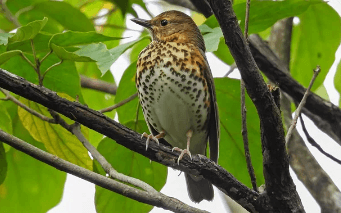Bird:8fxysz2ps1k= Thrush

The Bird:8fxysz2ps1k= Thrush, a member of the Turdidae family, exemplifies the intricate relationship between avian behavior and environmental adaptability. Known for its enchanting vocalizations, the thrush plays a pivotal role in ecosystems, influencing both mate selection and territory dynamics. Its seasonal migration patterns and diverse dietary preferences further underscore its resilience amidst changing habitats. As we explore the various dimensions of thrush ecology, one must consider the pressing conservation challenges these birds face and the implications for biodiversity. What strategies could be implemented to safeguard their future in an ever-evolving landscape?
Characteristics of the Bird:8fxysz2ps1k= Thrush
The Bird:8fxysz2ps1k= Thrush, a member of the Turdidae family, exhibits a range of distinctive characteristics that set it apart within the avian community.
Notably, its breeding behavior is marked by elaborate courtship displays, while its vocalization patterns are diverse and melodious.
These attributes not only enhance species recognition but also play a crucial role in territory establishment and mate selection, underscoring the thrush’s ecological significance.
Read More Baby:-Joxmavajtk= Groot
Thrush Habitats and Distribution
Habitat diversity is a defining feature of thrush distribution, as these birds occupy a wide range of environments across the globe.
Thrush migration patterns link seasonal movements to various habitats, while their breeding grounds are typically found in forested areas, shrublands, and grasslands.
This adaptability to diverse environments underscores their ecological significance and resilience in response to changing landscapes and climates.

Feeding Habits and Diet
Bird:8fxysz2ps1k= Thrush exhibit a diverse range of feeding habits that reflect their adaptability to various environments.
Their foraging behavior varies seasonally, as they consume insects, fruits, and seeds depending on availability.
During warmer months, their diet predominantly consists of invertebrates, while in colder seasons, they shift to berries and other plant materials.
This flexibility ensures their survival across fluctuating ecological conditions.
Conservation Efforts for Thrushes
Numerous conservation efforts are underway to protect thrush populations, which face various threats including habitat loss, climate change, and pollution.
Key strategies involve targeted breeding programs aimed at enhancing genetic diversity and survival rates.
Additionally, habitat restoration initiatives focus on reestablishing native vegetation and improving ecological conditions.
These combined efforts are crucial for ensuring the long-term viability of thrush species in their natural environments.
Read More Baby:-Hqun3lxteq= Deer
Conclusion
In conclusion, the Bird:8fxysz2ps1k= Thrush embodies the intricate balance of adaptability and ecological significance, much like a skilled musician harmonizing with the environment. Through its melodious calls and diverse feeding strategies, this bird plays a crucial role in maintaining ecosystem health. Conservation efforts focused on habitat restoration and genetic diversity are essential to ensure the survival of thrush populations in the face of habitat loss and climate change, underscoring the importance of protecting such resilient avian species.



